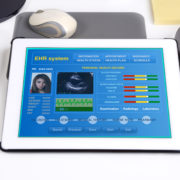Using an EHR to Cut Down on the Number of Hours You Work
The medical community has moved at its own pace when it comes to technology, and for good reason. As information sites have proliferated all over the world, medical professionals know enough to protect sensitive medical data at all costs.
However, the more resistant a staff is to new technology, the more likely they will end up with a system that is circuitous, limiting and frustrating. A system that ultimately wastes more time and creates more room for error.
Finding the right EHR can be the key to disrupting the status quo (and getting out of the office a little earlier.)
Getting Started
The hard truth is that few medical offices want to change their software. No matter how counterintuitive a system may be, the staff at least understands its quirks.
They’ve already put in the time to make it work for them. Changing a system opens a whole new set of challenges as the administration attempts to get everyone on the same page. It paves the way for misunderstandings, which in turn increases the number of hours a staff works. But it may surprise busy offices to learn that there are programs designed to be used immediately — software that was tailor-made specifically for their orthopaedic practice.
There are EHR options available that can be integrated into your current system quickly, and can immediately start to smooth out your workflow. Perks that translate into fewer hours and more productivity.
Organized and Ready
One of the best things about an EHR is that it simplifies the course of treatment for a patient. In just one click, you can find the doctor’s orders, the medications the patient is taking, and their therapy and referral recommendations.
When this information is scattered or staff (especially new staff) is unsure of when and how to update, it makes it more likely that someone at the front desk will have to untangle it all. Duplications must be deleted, typos must be fixed, and details must be triple confirmed from everyone who was involved in the case.
Of course, extra hours is the best case scenario when it comes to outdated or inefficient technology. The worst case scenario is a patient is hurt due to a mistake or an omission in their record.
Specialty Software
When using an EHR that was made for the generic medical office, you get accustomed to ignoring a number of different features of the software. After all, an orthopaedic practice is not comparable to a dermatology practice. These features may end up confusing people, or at the very least, take up valuable memory and space on your computer.
Choosing software made for your specialty means you won’t have to customize the options, because it’s already been designed to fit the specific needs of an orthopaedic office. Part of choosing the right EHR though is finding a software that is also flexible to how the staff likes to work.
Whether staff make all of their notes at one time or update during the course of treatment, EHRs should accommodate different workflows without creating additional time in the process.











